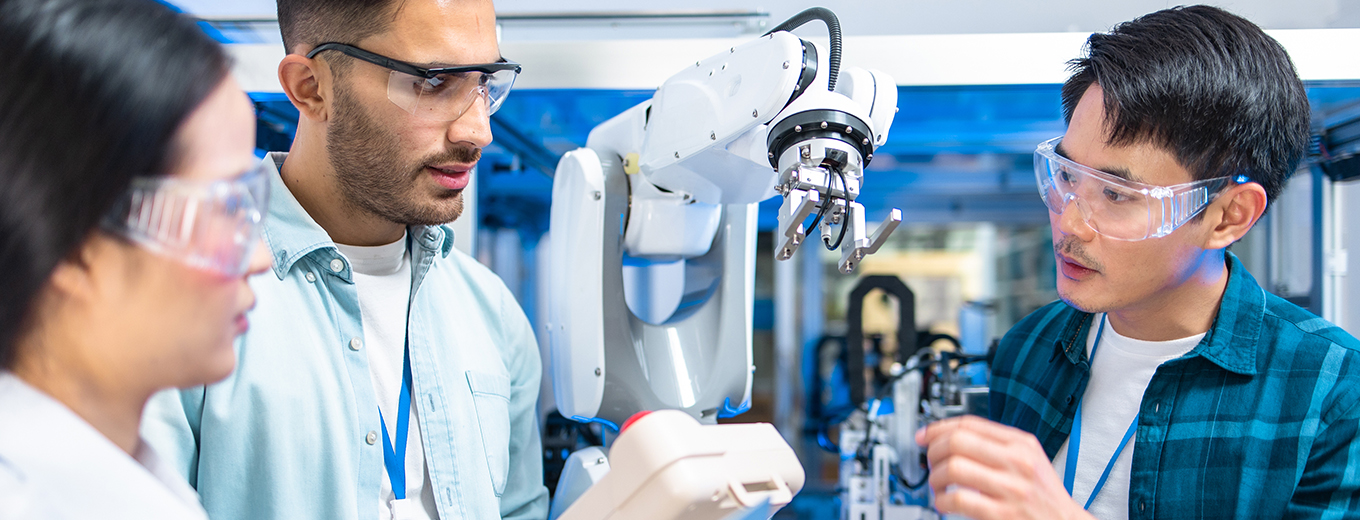The first Artificial Intelligence testing and experimentation infrastructures are launched under the Digital Europe Programme to serve innovators and policy.
Under the Digital Europe Programme, the EU has set up four large-scale Testing and Experimentation Facilities (TEFs) for artificial intelligence (AI) and robotics. Supplementing Member State funding, the European Commission (EC) is providing co-funding of €220 million over five years. The objective is to enable these TEFs to support AI developers in bringing trustworthy AI to the market more efficiently, and facilitate its uptake in Europe.
TEFs are specialised large-scale reference sites open to all technology providers across Europe to test and experiment with state-of-the art AI solutions at scale. This includes both soft-and hardware products and services, e.g. robots, in real-world environments. They will offer a combination of physical and virtual facilities, in which technology providers can get primarily technical support to test their latest technologies.
Each of the four projects that have now been launched, on 1 January 2023, focuses on a specific sector. The project agrifoodTEF is composed of three national nodes (Italy, Germany, France) and 4 satellite nodes (Poland, Belgium, Sweden and Austria), it offers its services to companies and developers from all over Europe who want to validate their robotics and artificial intelligence solutions for agribusiness under real-life conditions of use. The TEF-Health project spans 39 partners across 8 countries, including EIT nodes and initiatives such as EBrains, offering testing facilities for Health-related AI solutions. They also propose evaluation activities to facilitate market access for technologies while considering regulatory requirements (certification, standardisation, code of conduct), and ensuring easy access to these resources, as well as investment services. The AI-MATTERS project brings together a consortium of major organisations from eight European countries (Germany, Denmark, Italy, The Netherlands, Czech Republic, Greece, Spain and France) focused on the manufacturing sector. All consortium members bring their expertise in different manufacturing sectors such as automotive, space and mobility, textile, recycling, etc. The last project, focused on Smart Cities & Communities, Citcom.AI, brings together world-leading TEF capabilities around the three themes POWER, MOVE and CONNECT. It is structured in three “super nodes” Nordic, Central and South with satellites and sub-nodes located across 11 countries in the EU (Denmark, Finland, Sweden, Germany, Poland, Netherlands, Belgium, Luxembourg, France, Italy, and Spain).
TEFs are a key element in the EU’s broader innovation strategy. They will be an important part of building the AI ecosystem of excellence and trust to support Europe’s strategic leadership in AI. In addition, TEFs figure prominently in the New European Innovation Agenda (see SwissCore article), where the second of five flagship focuses precisely on enabling deep tech innovation through experimentation spaces and public procurement. TEFs can also contribute to the implementation of the Artificial Intelligence Act (that remains under negotiation) by supporting regulatory sandboxes in cooperation with competent national authorities for supervised testing and experimentation. The European Commission in this regard is studying how TEFs can support not only innovators in testing their solutions, but also policy makers in finding appropriate regulatory measures for these emerging applications. The Joint Research Centre has published a policy brief providing an overview of the ways in which experimentation spaces can support regulatory decision-making and learning. It discusses the joint value that innovators, citizens, and regulators may derive from collaboration within different experimentation spaces. The proposal is that TEFs can help develop new technologies and business models while also gathering evidence and information relevant to regulatory policies. Working in parallel, innovators can thus learn to adjust to the shifting regulatory landscape and regulators can learn about the impact of existing regulation and future regulatory needs.

